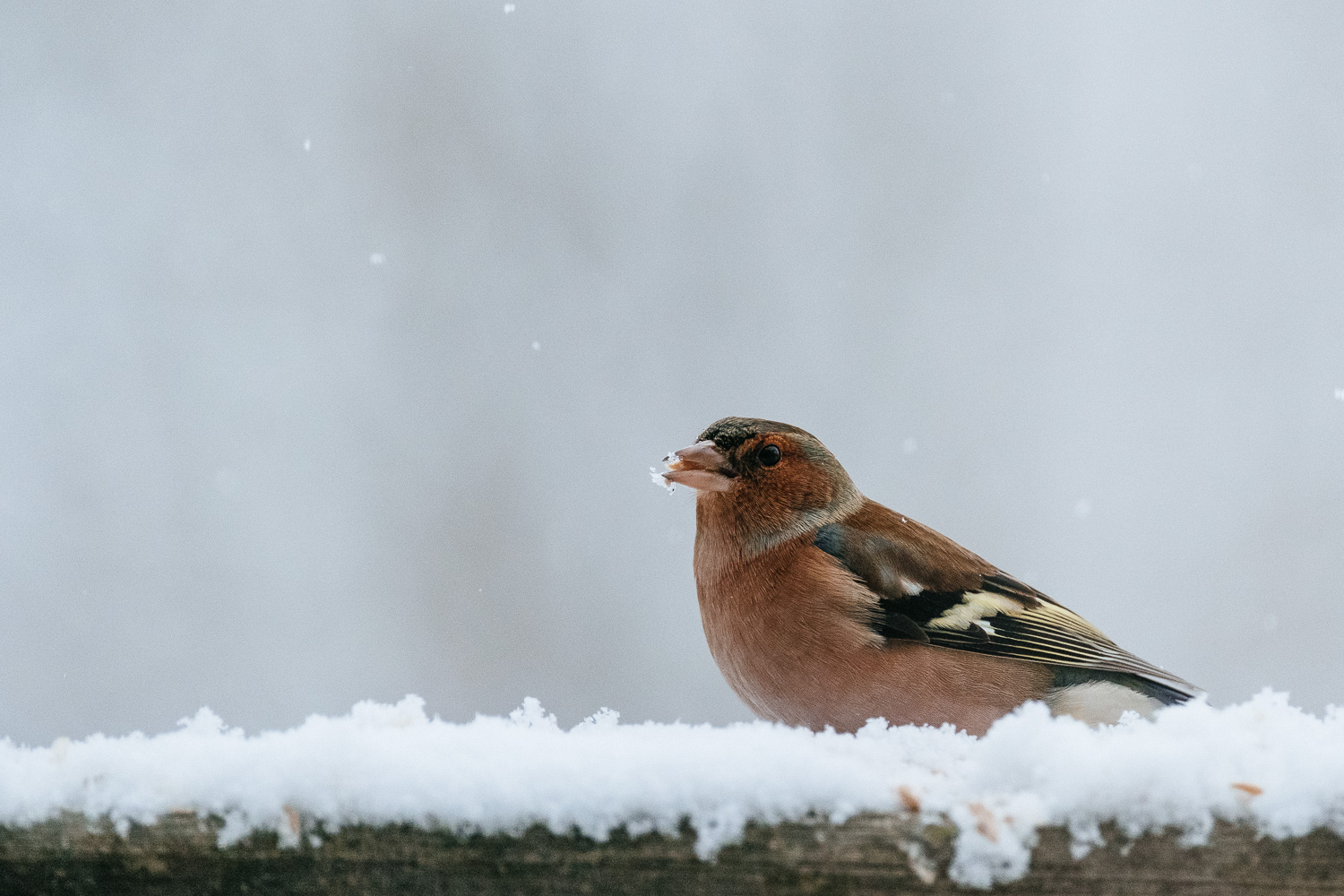 FUJIFILM X-Pro2 (280.4mm, f/5.2, 1/1000 sec, ISO2000)
FUJIFILM X-Pro2 (280.4mm, f/5.2, 1/1000 sec, ISO2000)
Sometimes all it takes to find nice subjects is to look outside your window. That plus a long lens.
A couple of years ago I was seriously into bird photography. I used to shoot with a Nikon D1 and later D2H but more important I had the fantastic Nikon AF-S 2.8/300 ED. One of the best tele lenses ever made. Pictures were super sharp even with the lens wide open and f2.8 helped to keep the shutter speed high in the early morning light and subject isolation was great too.
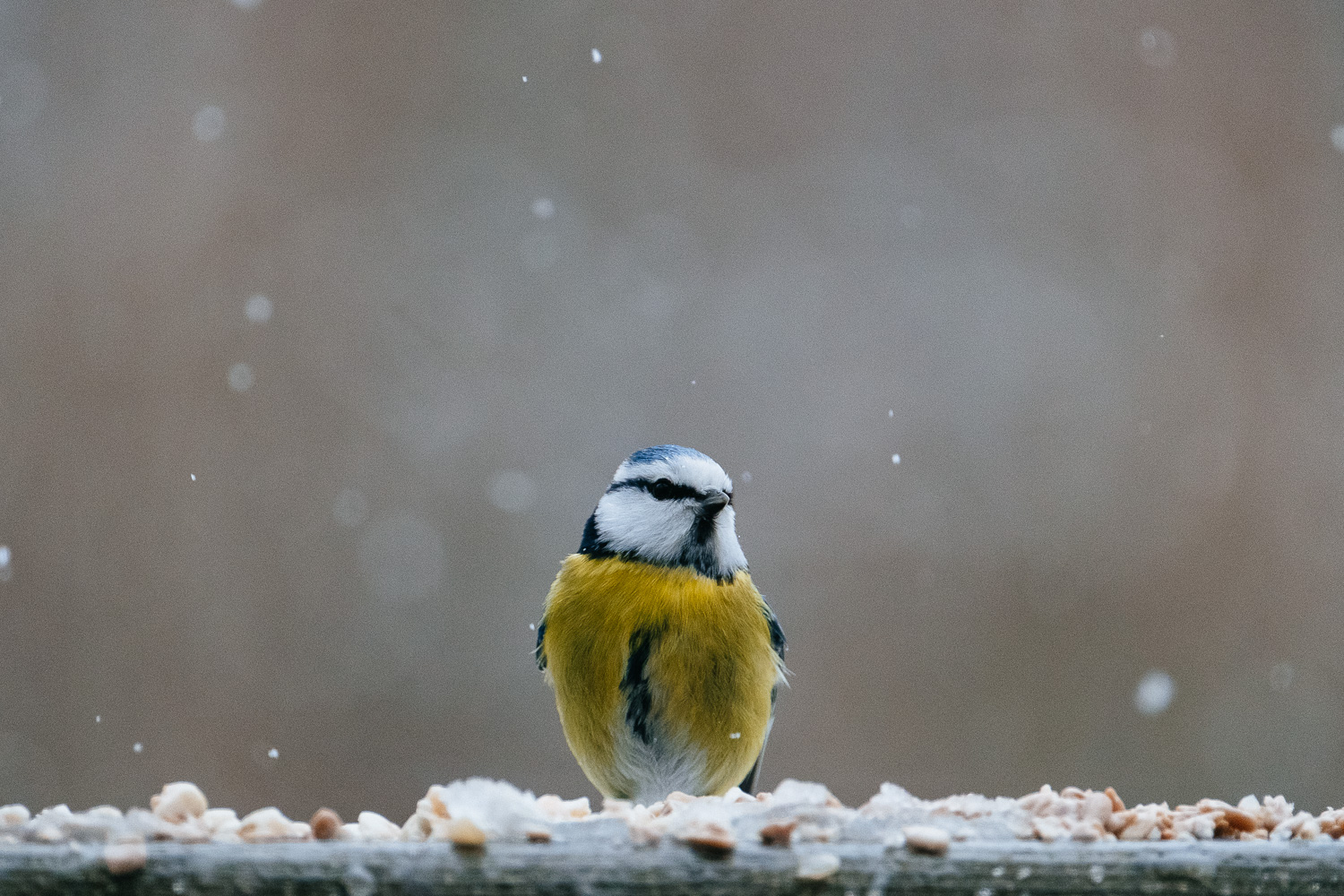 FUJIFILM X-Pro2 (312mm, f/5.2, 1/1000 sec, ISO1600)
FUJIFILM X-Pro2 (312mm, f/5.2, 1/1000 sec, ISO1600)
 FUJIFILM X-Pro2 (400mm, f/5.6, 1/1000 sec, ISO2500)
FUJIFILM X-Pro2 (400mm, f/5.6, 1/1000 sec, ISO2500)
This Nikon tele lens replaced the Nikon 80-400 VR. The first version of the lens with the very slow autofocus. A lens that I never really liked because it was soft at it’s long end and because it couldn’t be used with converters.
Why I’m telling you that? The answer is that it took me some overcoming to buy the Fuji XF 100-400 OIS. I was afraid that it would be just another slow and disappointing tele zoom.
But the times have changed. The lastest Canon and Nikon tele zooms and even the long zooms from Sigma and Tamron seemed to be vastly improved. At least according to all the reports. Another thing that swung me over was the fact that the Fuji zoom can be used with converters. A 100-400 lens with a 2x teleconverter would be become the equivalent of a 1.200mm lens on an APS-C sensor or in other words a really long lens. But so far I only got the 1.4 TC because I have no good experiences with 2xTCs. They cost a lot of light, image quality and most of all AF performance. 560mm (840mm equ.) is still plenty. Even without the TCs 400mm gives a lot of reach on APS-C. So back to the naked lens.
I was shooting through our window which is a kind of energy saving, 3 sheets of glass plus noble gas affair. Good for keeping you warm in the winter but not so good regarding light yield. I guess this window costs at least 3 stops of light! Luckily times have changed regarding sensors too and there is no need to stay below ISO 800 to get useable results. Keep that in mind when you look at the image below. The camera had difficulties to focus on the blackbird but focused on the trees behind instead. Only when I lowered the camera to focus on the handrail first I was able to overcome this and finally focused on the head of the bird.
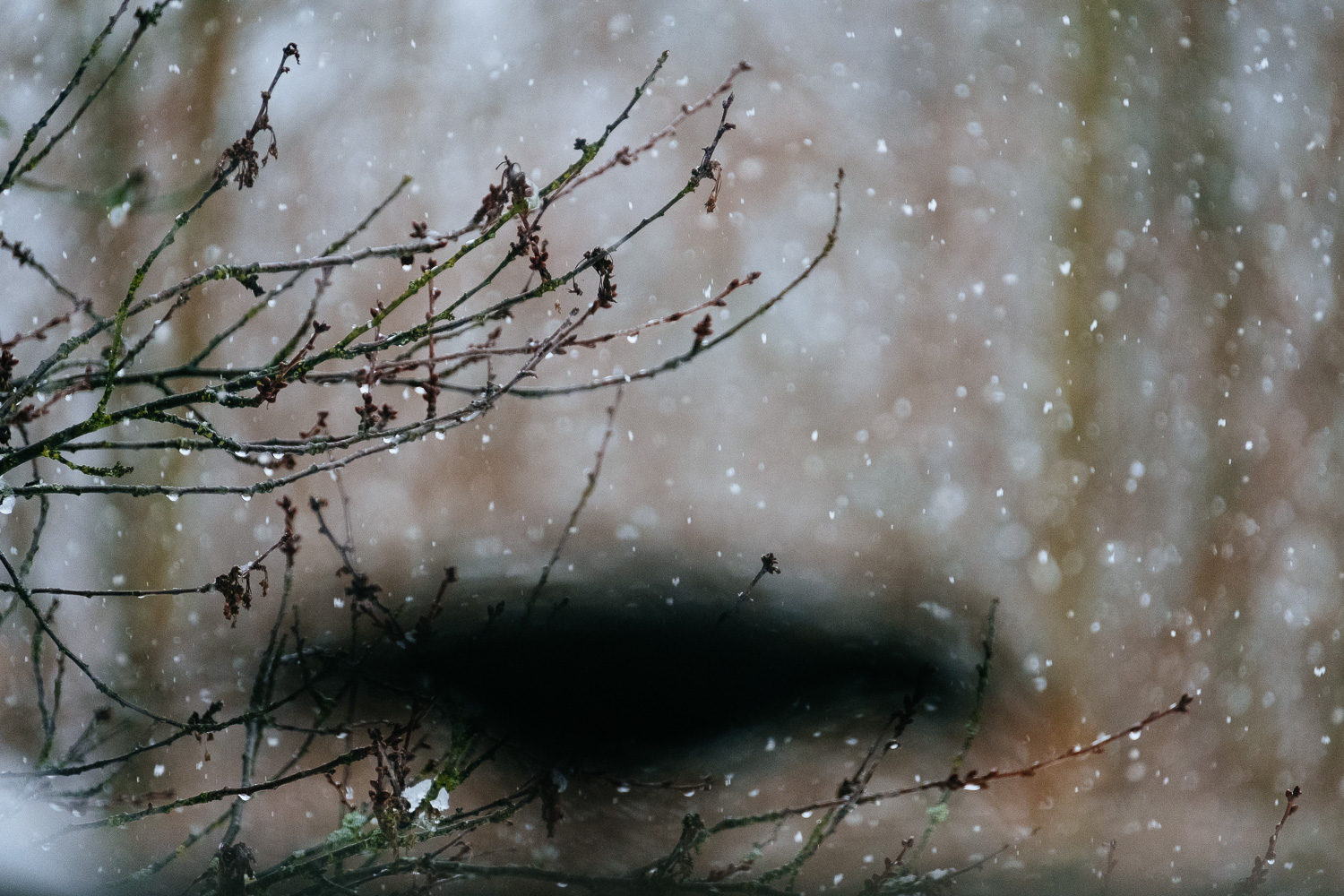 FUJIFILM X-Pro2 (400mm, f/5.6, 1/1000 sec, ISO1600)
FUJIFILM X-Pro2 (400mm, f/5.6, 1/1000 sec, ISO1600)
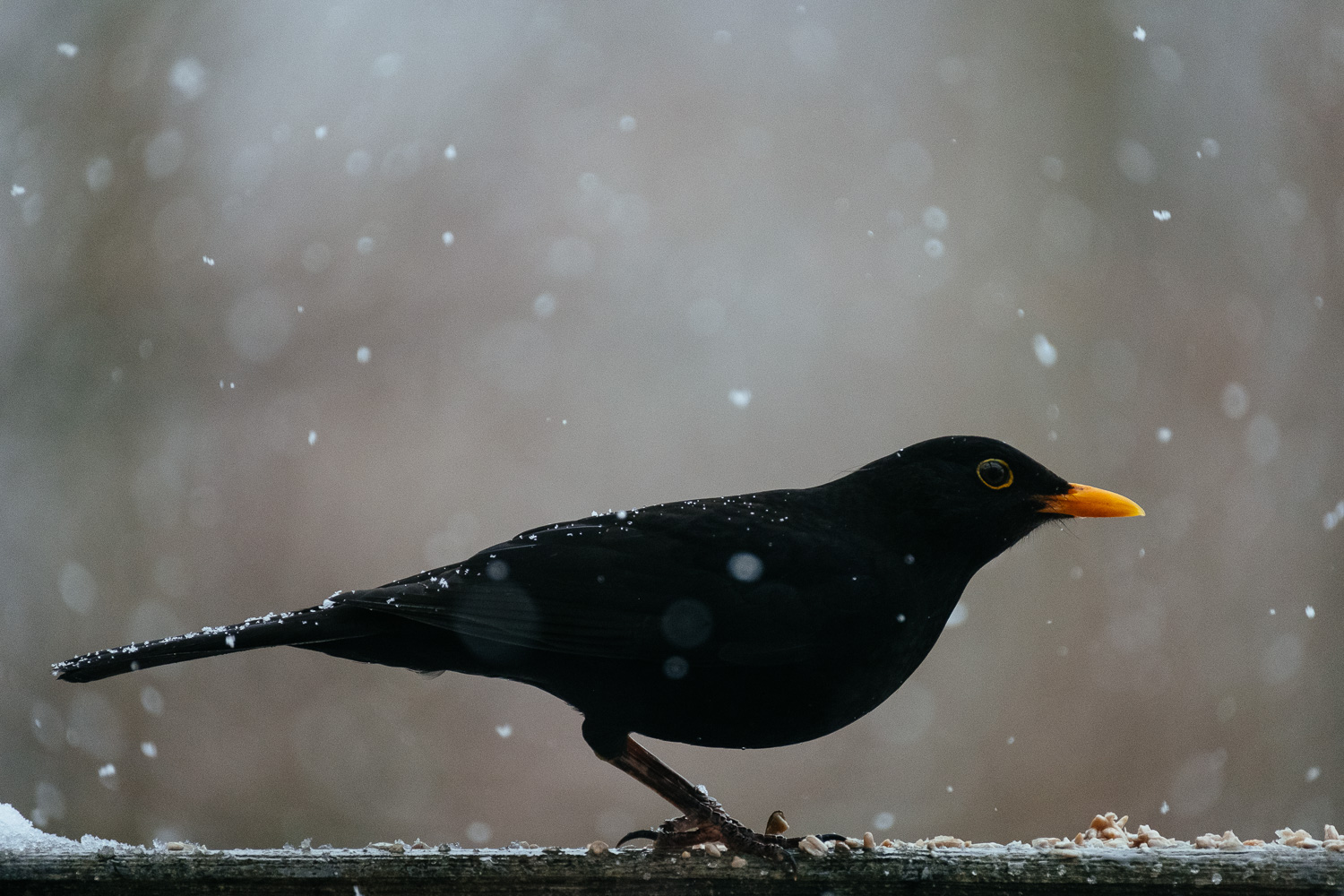 FUJIFILM X-Pro2 (400mm, f/5.6, 1/1000 sec, ISO1600)
FUJIFILM X-Pro2 (400mm, f/5.6, 1/1000 sec, ISO1600)
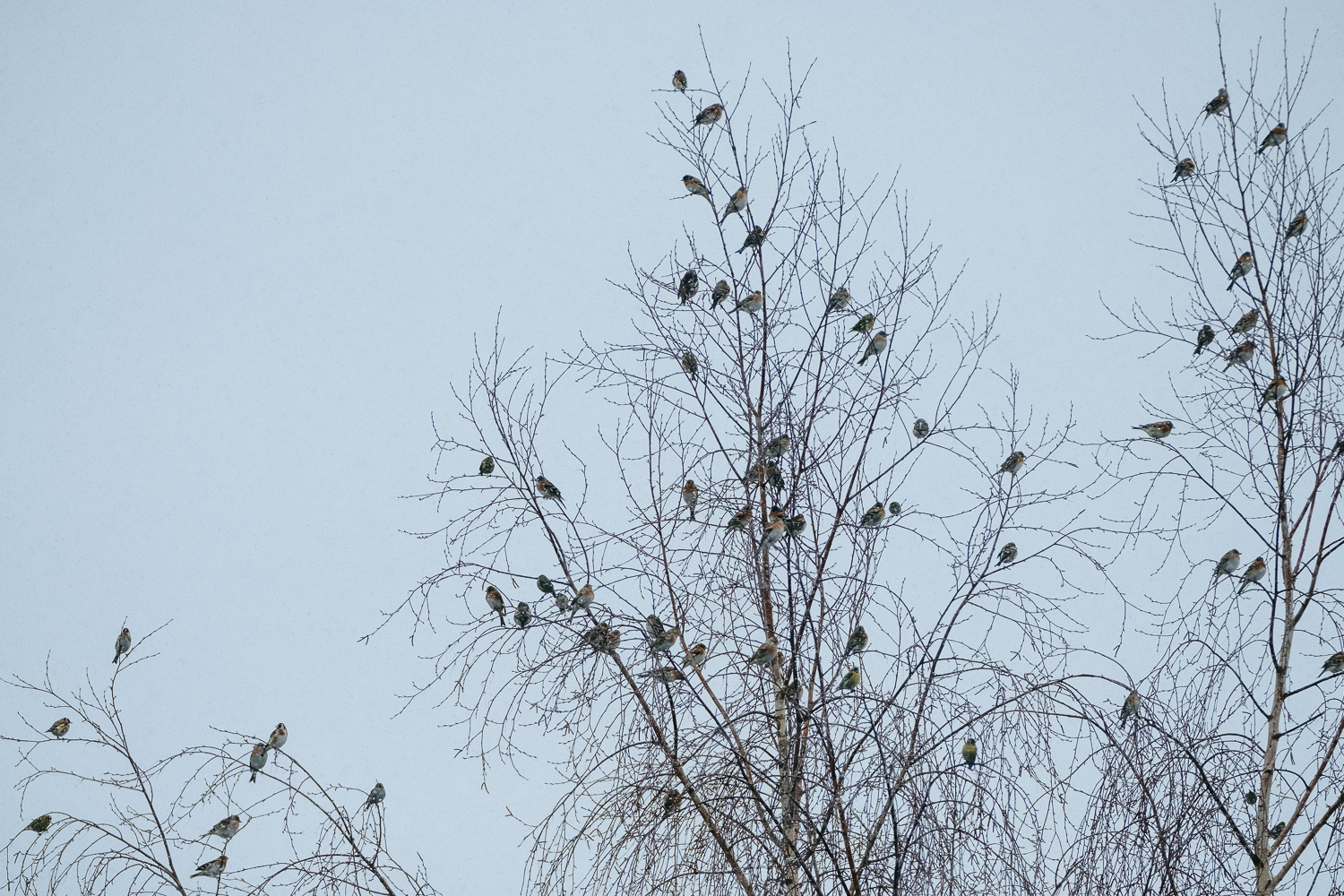 FUJIFILM X-Pro2 (176.7mm, f/4.8, 1/2000 sec, ISO640)
FUJIFILM X-Pro2 (176.7mm, f/4.8, 1/2000 sec, ISO640)
But Fuji has come a long way regarding AF. From the X100 with it’s factory firmware to the X-Pro2 or X-T2. From almost unusable to close to DSLR fast. And in one aspect it’s even better than the AF in DSLRs. When the Fuji has focused the image is in focus. You can’t say that with an DSLR where AF can be a hit and miss affair if the depth of field is shallow. I focused manually a lot when I had the big Nikon tele mainly to avoid the focus and recompose technique that never works in close range.
With the new Fuji’s there is no need to AF and recompose as there are hundreds of AF points spread all over the screen. So on the blackbird shot I just chose the AF point that covered the eye of the bird. The image is critically sharp but what makes the shot are the falling snow flakes plus the ones on the birds tail.
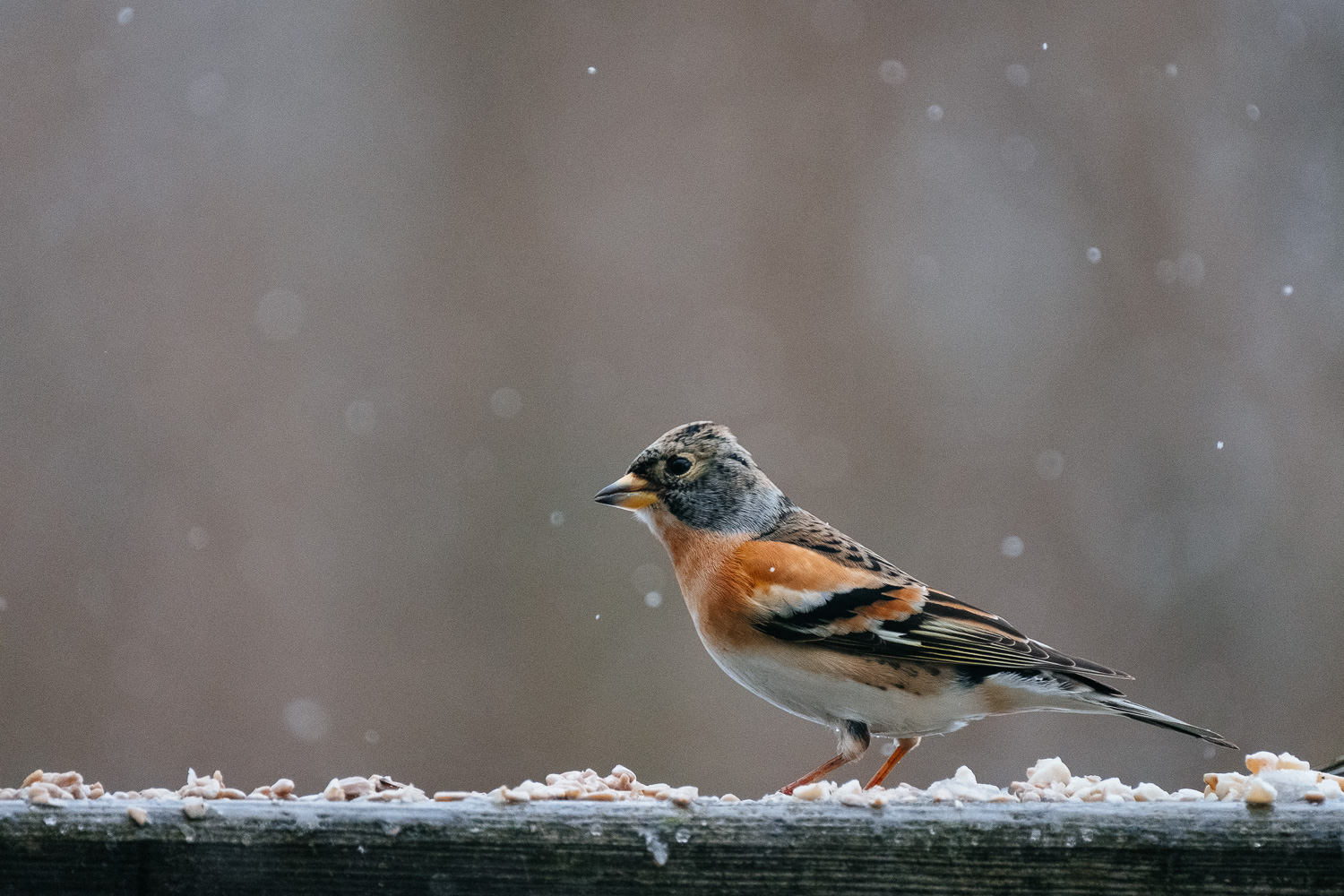 FUJIFILM X-Pro2 (400mm, f/5.6, 1/1000 sec, ISO2500)
FUJIFILM X-Pro2 (400mm, f/5.6, 1/1000 sec, ISO2500)
 FUJIFILM X-Pro2 (400mm, f/5.6, 1/1000 sec, ISO2500)
FUJIFILM X-Pro2 (400mm, f/5.6, 1/1000 sec, ISO2500)
 FUJIFILM X-Pro2 (400mm, f/5.6, 1/1000 sec, ISO2500)
FUJIFILM X-Pro2 (400mm, f/5.6, 1/1000 sec, ISO2500)
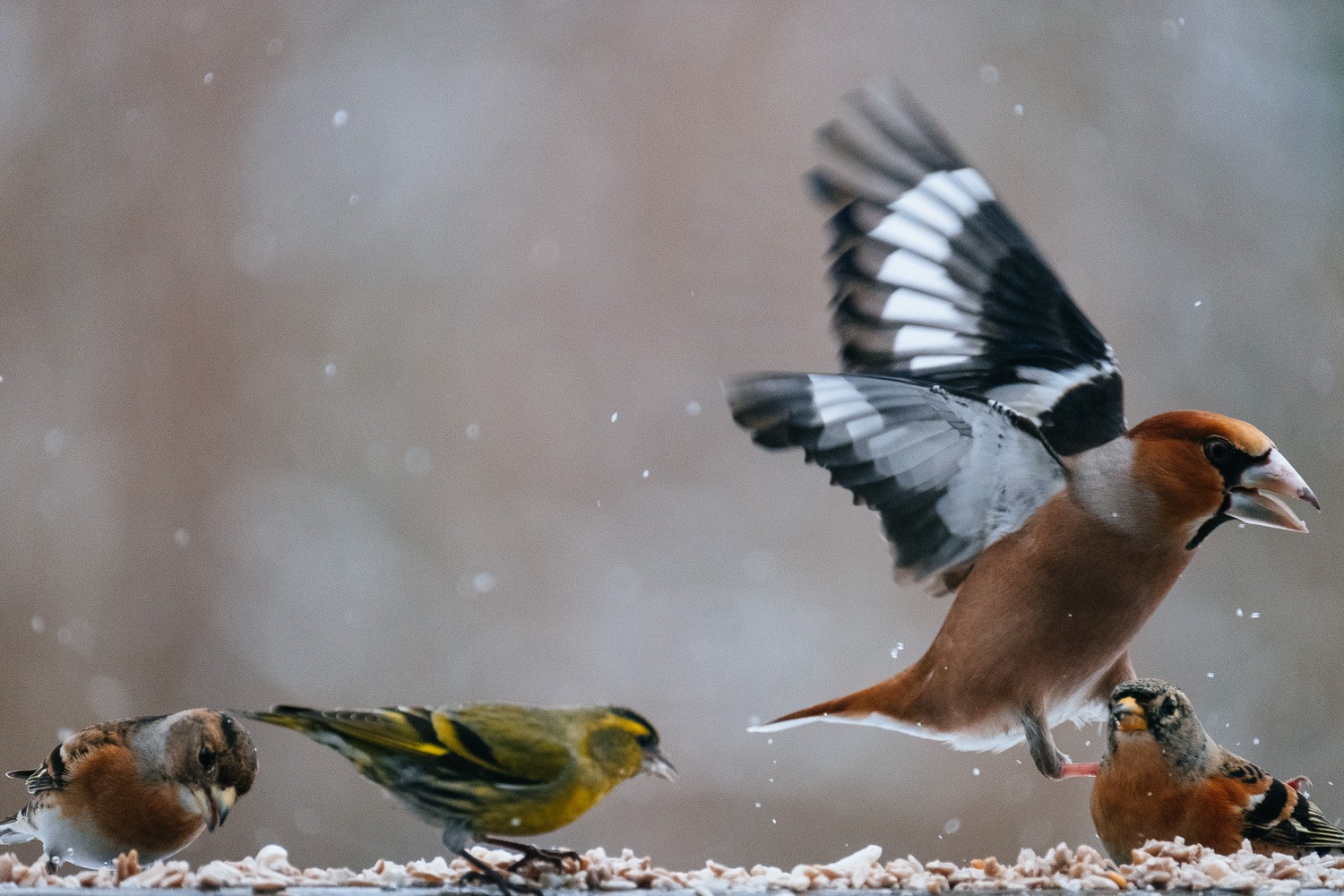 FUJIFILM X-Pro2 (400mm, f/5.6, 1/1000 sec, ISO2500)
FUJIFILM X-Pro2 (400mm, f/5.6, 1/1000 sec, ISO2500)
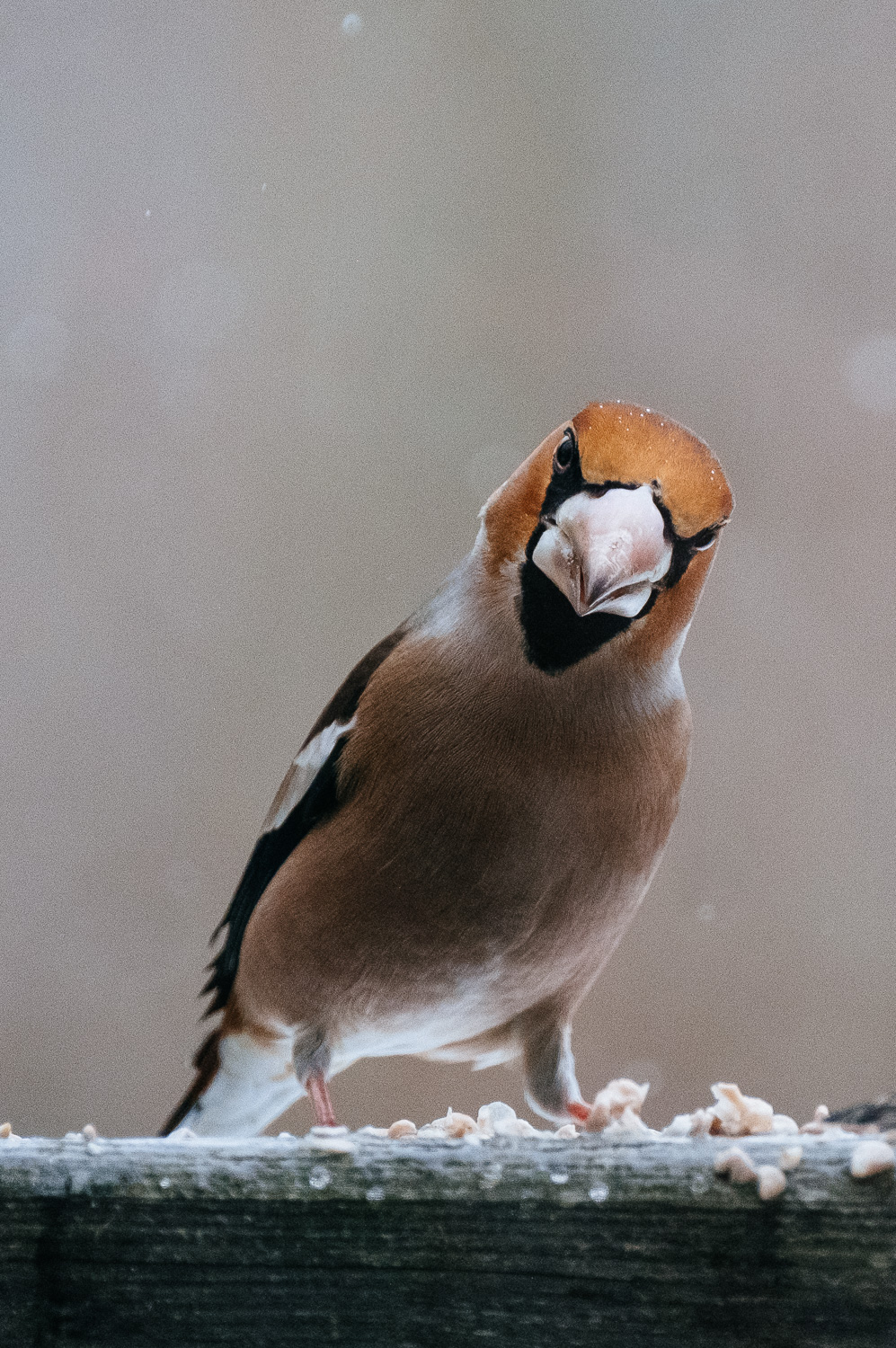 FUJIFILM X-Pro2 (400mm, f/5.6, 1/1000 sec, ISO2500)
FUJIFILM X-Pro2 (400mm, f/5.6, 1/1000 sec, ISO2500)
Most of the shots in this blog post are un-cropped except the one above. I cropped it out of a landscape shot. I liked the expression of the grosbeak. It was almost like he was staring at me.
Maybe it’s time to talk about the performance of the lens. Taking into account that I was shooting through three layers of thick glass and that most shots are taken at ISO 1.600 or above I would say it’s excellent. It has nothing to do with the first version of the Nikon 80-400 VR that I owned long time ago. The Nikon was not sharp at 400mm until stopped down to f11. Of course that made the lens useless for wildlife or bird photography. There is never enough light to do that. Especially not in the morning or during the winter when light is beautiful but not very strong.
The Fuji is completely different. It is surprisingly sharp at 400mm@f5.6. Of course it would slightly improve if stopped down to f8 but that’s irrelevant because of the lack of light and also because of subject separation. Today high ISO performance of cameras is so good that you can happily shoot at crazy high ISO settings and still get reasonable good results but there is still one strong reason for fast lenses: subject isolation. Trust me on this one you don’t want to go slower than f5.6. That would make it very tricky to make the subject stand out in front of a busy background unless like in my case the subject is very close to the lens and the background is much further away.
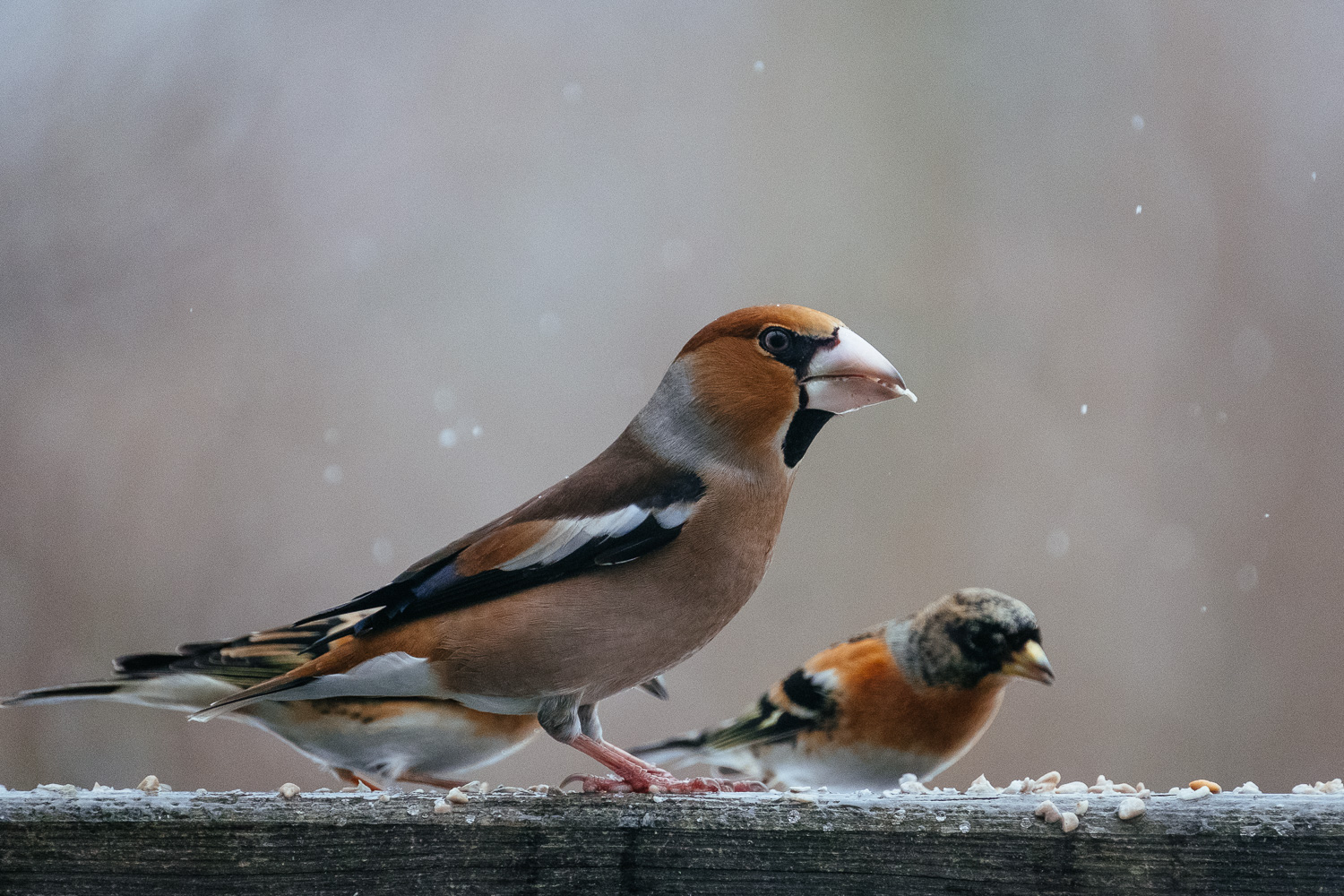 FUJIFILM X-Pro2 (400mm, f/5.6, 1/1000 sec, ISO2500)
FUJIFILM X-Pro2 (400mm, f/5.6, 1/1000 sec, ISO2500)
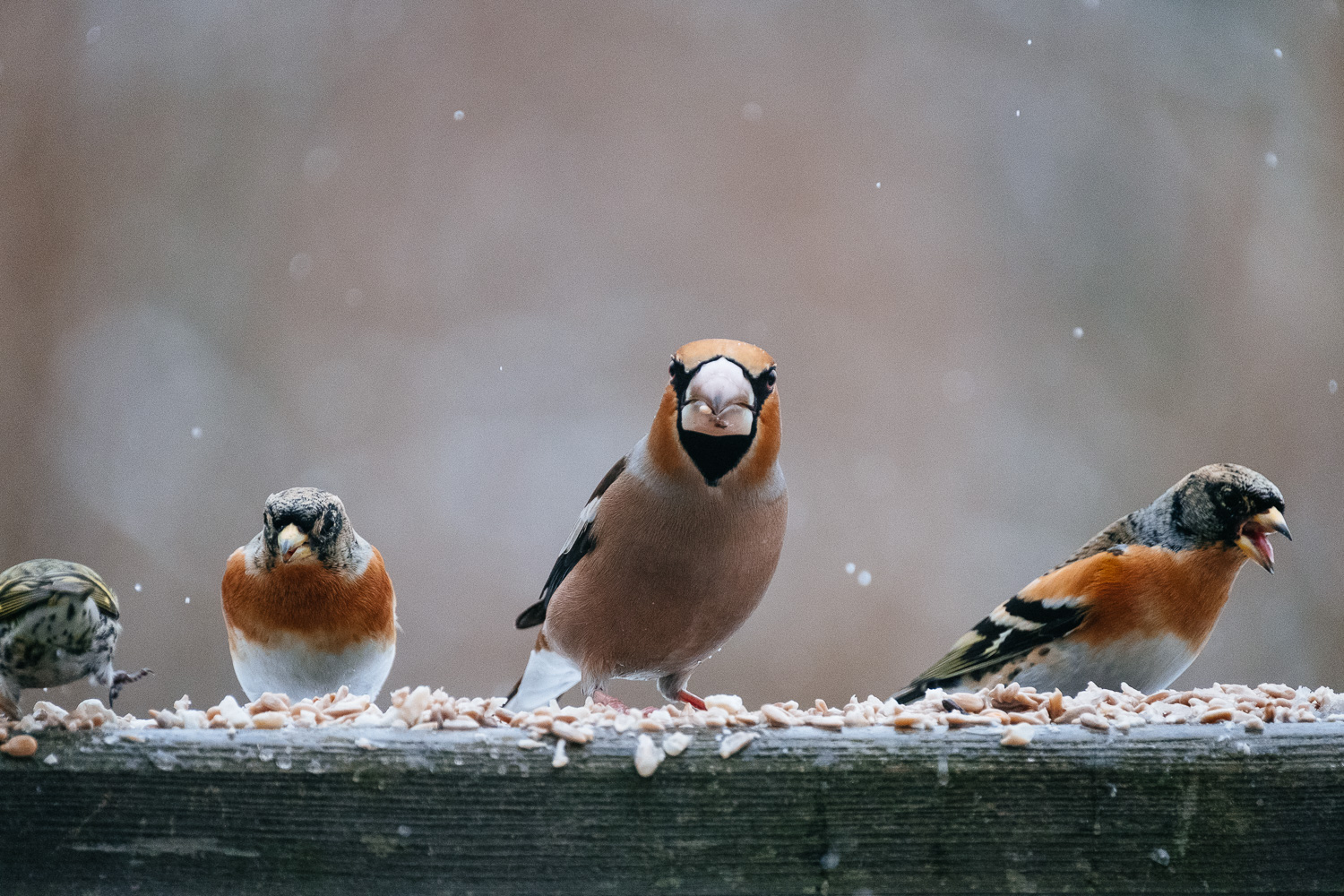 FUJIFILM X-Pro2 (400mm, f/5.6, 1/1000 sec, ISO2500)
FUJIFILM X-Pro2 (400mm, f/5.6, 1/1000 sec, ISO2500)
 FUJIFILM X-Pro2 (400mm, f/5.6, 1/1000 sec, ISO2500)
FUJIFILM X-Pro2 (400mm, f/5.6, 1/1000 sec, ISO2500)
My photography has changed. Instead of bird photography I’m more into travel photography now. So I don’t shoot this lens very often at all. I still have no plans to sell it and here is why. Next trip to the USA or Canada this lens will be with me to take beautiful pictures of bears, sea lions, bald eagles, sea otters or simply surfers.
I also consider a long lens to be extremely important for landscape shots to be able to compress the scenery. The 100-400 will give me a lot of reach and a lot of compression while its weight and size is still reasonable. I never traveled with the Nikon AF-S 2.8/300 ED because this lens was a monster with easily twice the size and weight of the Fuji zoom. Never would I have taken it on a vacation. I’m not a professional nature photographer, I’m a tourist. So even if I would visit the famous waterfalls in the Katmai NP Alaska to shoot Grizzly bears I would not bring a pro tele lens. But I would happily shoot with the Fuji zoom knowing that beside a little subject isolation there is very little compromise elsewhere.
Summary: It’s a very good lens and even more important it is a lens that you can still bring with you on vacations.
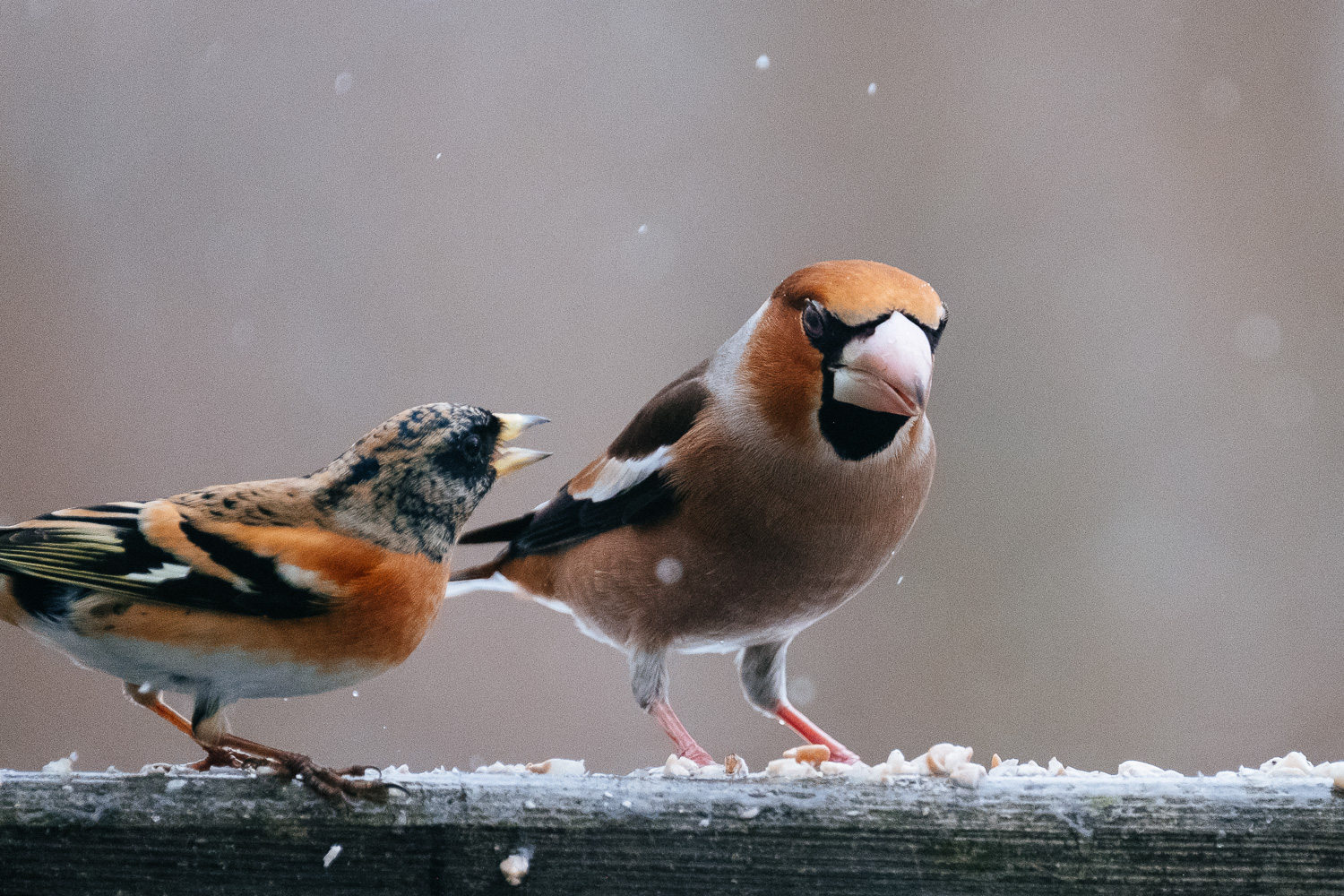 FUJIFILM X-Pro2 (400mm, f/5.6, 1/1000 sec, ISO3200)
FUJIFILM X-Pro2 (400mm, f/5.6, 1/1000 sec, ISO3200)
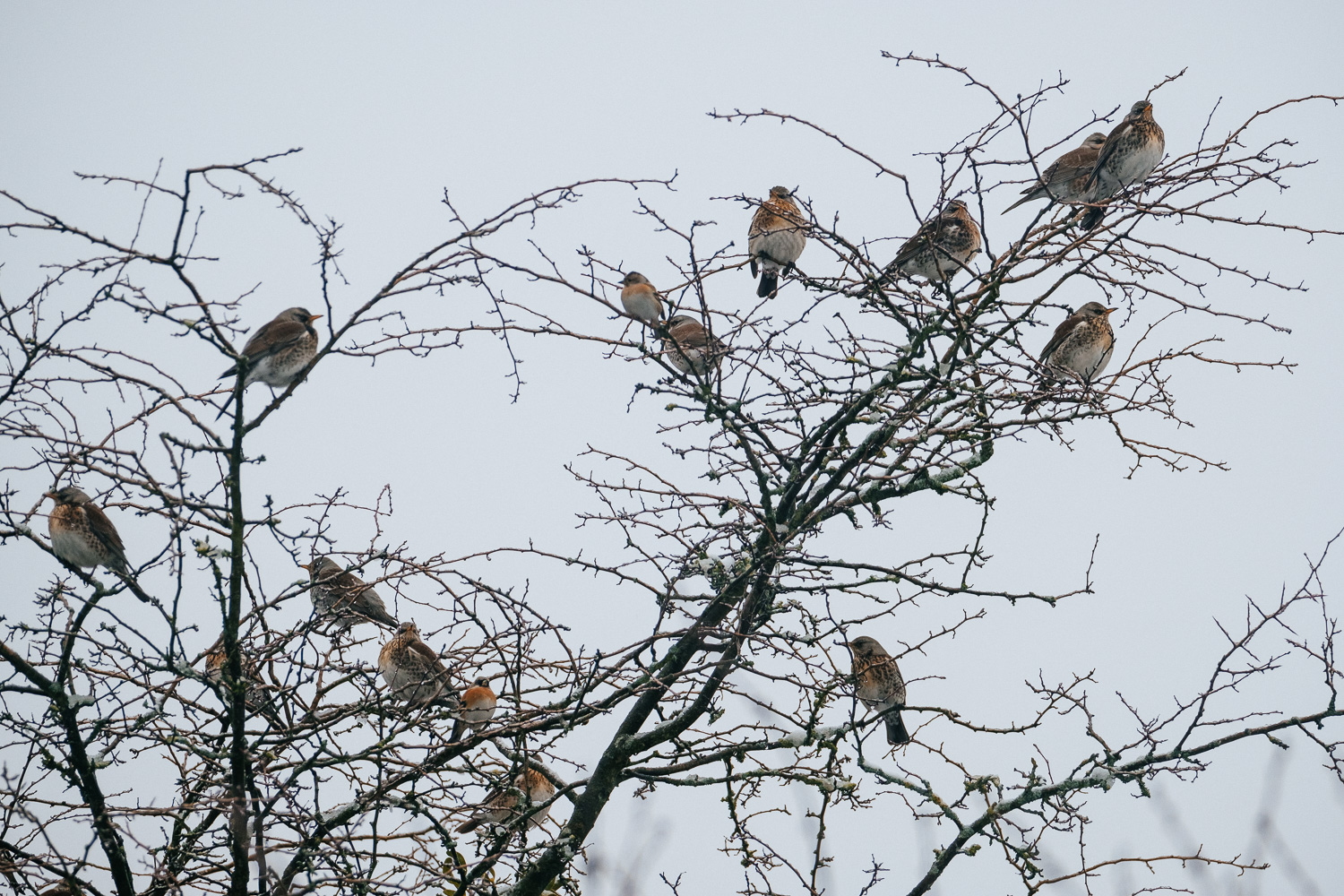 FUJIFILM X-Pro2 (211mm, f/5, 1/160 sec, ISO320)
FUJIFILM X-Pro2 (211mm, f/5, 1/160 sec, ISO320)
